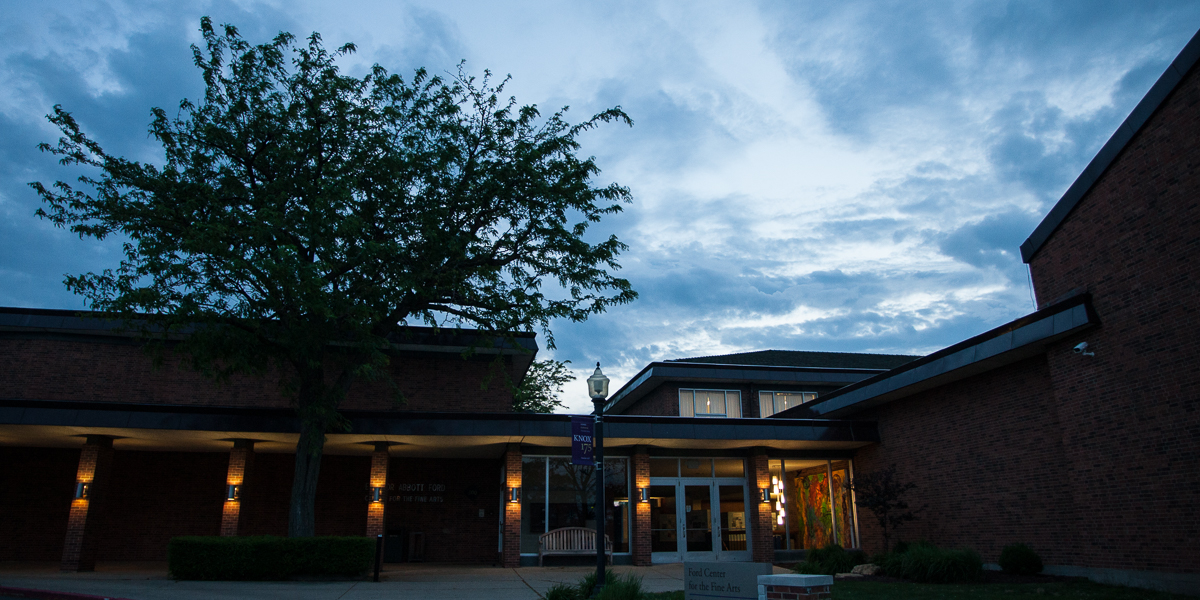

Venture Boldly

Adriana Colindres
Features Editor
2 East South Street
Galesburg, IL 61401

Knox College students have teamed up with Knox faculty and alumni, community historians, and others to produce a new exhibit, "WW II: A World Transformed," which delves into how the conflict affected people's daily lives.
The exhibit is in the Eleanor Abbott Ford Center for the Fine Arts on the Knox campus. It runs through August 13 and may be viewed whenever the building is open.
The display represents the culmination of Knox History Professor Catherine Denial's spring term class, "History 347: Museums, Monuments and Memory."
Students spearheaded the project, Denial said. They researched the time period, conducted oral interviews with people who lived through the war, and designed and built the exhibit.
"I loved the innovative design the design team came up with, the way the class thought so carefully and critically about what areas of World War II they should each research, and the way they've been so generous and gracious in working together," Denial said.
Jennifer Pederson, a senior art major from Madison, Wisconsin, said she and her classmates deliberately designed the exhibit so visitors could enter from multiple points.
"World War II is so huge that it'd be really hard to have a beginning and an end," she said. "There's a lot of information to cover, which is why we have so many panels."
The exhibit is divided into several war-related themes, including the role of women, the use of propaganda, and post-war life. Photographs, personal letters, and other artifacts help tell the story.
But the heart of the exhibit is a series of oral interviews with Knox alumni and the grandmother of one of Denial's students, all of whom lived through the war.
"We're basing this around their experiences," said Gloria Feliciano, a senior from Chicago with double majors in history and theatre. "We're looking at World War II as the transformative event of the 20th Century."
 Calvin Zirkle, a junior from Kankakee who is majoring in Asian studies, was surprised to learn about the hardship his grandmother endured as a girl in wartime Japan.
Calvin Zirkle, a junior from Kankakee who is majoring in Asian studies, was surprised to learn about the hardship his grandmother endured as a girl in wartime Japan.
Kimiyo Patterson grew up in Ashikaga, Japan, not far from Tokyo. She was 11 when the war ended in 1945.
She shared memories of how her family, like other Japanese families, covered windows with blankets at night to make their homes less of a target for Allied bombers.
"I didn't know she even experienced World War II," Zirkle said. "She went through the bombings, and she had to go in shelters. I didn't know how rough she really had it."
Another of the students' interview subjects, Sally Arteseros, recounted what it was like to be a young girl in the United States during wartime.
Arteseros, who was 6 when the war ended, grew up in San Francisco. The city regularly experienced power blackouts, a precaution meant to impede Japanese planes in case of attack. She graduated from Knox in 1958.
"She remembered the reading groups in school were divided into Army, Navy, and Marines," Feliciano said. "She really remembered the blackouts because she was afraid of the dark."
Denial described the project as "an enormous collaboration between all kinds of groups."
"At the center of that are the students, who interviewed alumni about their memories of World War II, reached out to community members, and worked with local organizations to round out their experience," she said.
Others who helped with the exhibit include Galesburg historian Tom Wilson, the staffs at Knox College's Henry M. Seymour Library and the Galesburg Public Library, and the Galesburg Historical Society, she said.
"This is just a sampling of the number of people who have supported this project from beginning to end," she said.
Founded in 1837, Knox is a national liberal arts college in Galesburg, Illinois, with students from 45 states and 48 countries. Knox's "Old Main" is a National Historic Landmark and the only building remaining from the 1858 Lincoln-Douglas debates.
Published on May 28, 2010